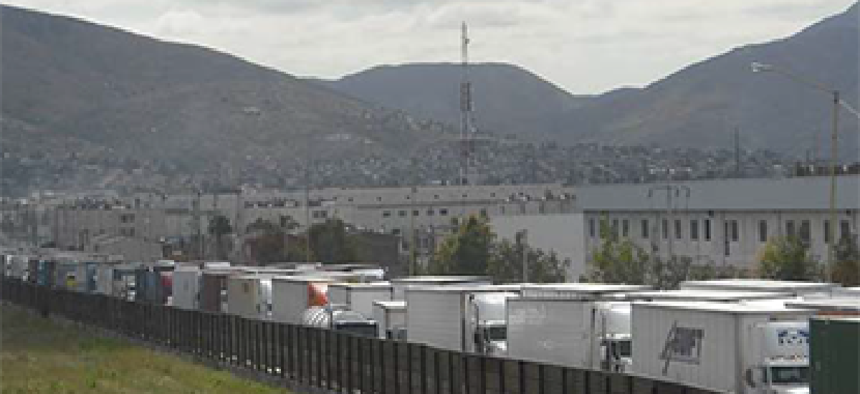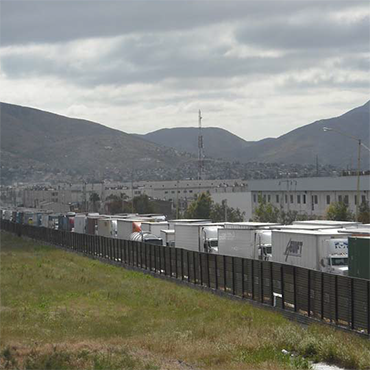CBP needs better ways to estimate wait times

GAO urges the border agency to update its manual methods for estimating the length of time trucks wait in line to cross Mexican borders into the U.S.

Trucks line up to cross from Mexico into the U.S. (CBP photo)
Estimating how long commercial trucks must wait in the northbound line at the U.S.-Mexican border is not as straightforward as it sounds. U.S. Customs and Border Protection is having difficulty gathering that kind of data uniformly at numerous border crossings across the Southwest because its collection methods are unreliable and in need of automation, according to a new report by the Government Accountability Office.
The GAO report, released by Texas Republican Sen. John Cornyn, ranking member of the Judiciary Committee's Subcommittee on Immigration, Refugees and Border Security, was critical of CBP's methods for collecting data on the time it takes commercial vehicles to travel from the end of an entry line to the primary inspection lane at six land ports of entry. Border wait times are crucial for truckers who regularly cross the Mexican and Canadian borders. Every minute a truck spends in line waiting for inspection can mean lost trade revenue and negative effects on the U.S. economy, said GAO.
CBP began collecting the border crossing wait time data at a limited number of crossings in 2001 in response to the long delays that ensued as security tightened after the Sept. 11 terror attacks. It began formalizing the process at other crossings and now makes the information available online for 42 of 46 crossings on the Southwestern border.
Processing commercial vehicles into the United States at land ports of entry involves a series of synchronized steps. The agency uses various databases and tools, including the Automated Targeting System, Automated Commercial Environment and local Advance Targeting Units (ATU) to screen and assign risk levels to travelers and cargo entering the United States.
At border crossings, however, CBP's complex digitized process -- intended to speed the flow of cargo -- is sometimes at the mercy of the limits of everyday human observation.
To calculate wait times at border crossings, the CBP has relied on two methodologies, said GAO. The first is line-of-sight observation by the port of entry director of the lines of traffic entering the crossing, estimating times using landmarks along those lines. If the line is obscured by bad weather (dust storms are common in the desert), or the end of the line is not visible to the observer, CBP policy recommends that officials estimate wait times using the second methodology, which is to ask at least five drivers how long they have been waiting in line, drop the highest and lowest responses, and average the rest.
Those techniques, said GAO, are not reliable and vary considerably from crossing to crossing and among port directors. "As a result, these data are generally not used by the private sector and are of limited usefulness for CBP management decisions on staffing and infrastructure investments," GAO concluded.
At all five of the crossings GAO studied, the end of the line sometimes extended beyond landmarks used in the line-of-sight methodology and none had a camera system in place with the capacity to consistently view the end of queues. Two crossings in Laredo, Texas -- World Trade Bridge and Columbia Solidarity Bridge -- had camera systems that allowed officials to see the line several miles into Mexico, but CBP officers noted that those systems could not be used to see the end of the queue on hazy and dusty days.
CBP previously questioned the method in its fiscal 2008 Western Hemisphere Travel Initiative program office, saying that if CBP officials cannot see the end of the line, they cannot accurately gauge the full duration of wait times.
In light of its study, GAO recommended CBP determine what steps were needed to get consistent implementation of existing wait-time data collection techniques and make strides toward implementing them. It also said CBP should think about replacing the methodologies with automated methods.
NEXT STORY: NIST cybersecurity center moves into high gear


